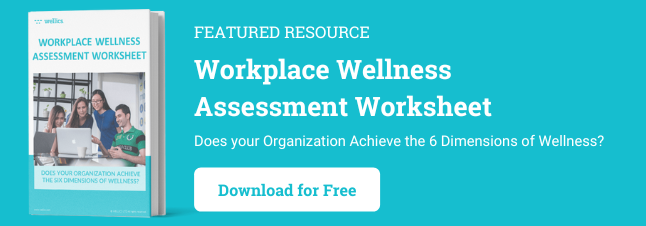Having a way to define and measure productivity is integral to organizational success. Highly productive employees tend to be more engaged in the organization’s goals, both short-term and long-term, leading to higher workplace satisfaction, and in turn, greater employee well-being.
This guide to how to measure productivity in the workplace covers different ways that organizations define and measure productivity. We also offer suggestions for productivity measurement tools that can help your organization achieve and exceed productivity benchmarks.
Importance of Measuring Employee Productivity
What is productivity and what does productivity measure? While productivity has an evolving definition, it often refers to the amount of work you can get done at any given time. In other words, the more you produce in the shortest time frame, the higher your productivity.
However, productivity doesn’t only refer to the quantity of work you produce. It can also include the quality of your output and how consistently you produce work at a certain standard. Productivity is a flexible term, and it’s up to each organization to define what it means under their objectives.
Regardless of how you define productivity, to know whether you’re being productive or not, you need to have a way of measuring it.
Here are a few reasons why measuring productivity in the workplace is important:
- Uncover patterns or behaviors that increase or decrease productivity
- Make positive operational changes according to productivity results
- Identify and assess critical objectives that support the organization’s mission
Productivity measuring is critical to organizations that want to maintain high performance and optimize not only operations but employee satisfaction and well-being.
How to Evaluate Employee Productivity
Since productivity has several possible definitions, there are also different ways to measure productivity. An organization can focus strictly on one evaluation method, or it can measure productivity from several angles.
Below are three approaches to evaluating employee productivity.
1. Measure Objectives
One increasingly popular way to evaluate employee productivity is to define productivity as how well the organization and individual employees meet specific objectives. This approach helps organizations grow and expand because it requires teams to think critically about their goals and clarify what they’re out to achieve.
Evaluating employee productivity based on how well they achieve these goals also creates a unified work environment, where everyone knows the contribution they make toward the overall aim. The more employees feel their contribution matters, the more likely they’ll be to meet their objectives, increasing the organization’s productivity.
2. Track Labor Hours
Tracking labor hours and their costs is the traditional way to measure employee productivity. Managers record how long employees spend working on a particular task and then compare that result to similar work done at other times.
This method allows managers to build systems or provide tools that help employees complete tasks faster. It also gives managers a way to understand the circumstances that allow for either high or low productive periods, such as certain times of day, days of the week, or seasons of the year.
By implementing new tools or systems, managers can conduct a controlled experiment, evaluating what impact certain solutions have on productivity.
3. Evaluate Customer Satisfaction
A third way to define and measure productivity is by evaluating how satisfied your customers are. Since customers are an organization's key group of stakeholders, how satisfied they are is a great indicator of how well employees are contributing to organizational objectives.
Customer satisfaction surveys, interviews, and interaction metrics provide managers with data that can be analyzed to determine how productive the company is at successfully serving its customers. Managers can also measure how customer satisfaction changes over time and whether certain customer service practices lead to higher or lower customer retention.
Productivity Measurement Tools
Once you’ve defined what productivity means to your organization, you need a way to promote higher levels of it. Productivity measurement programs not only help you judge your productivity results, but they can also help improve them by giving you the tools to increase your team’s performance.
Three types of employee productivity measurement tools include:
1. Project management tools
If your organization defines productivity as your employees’ abilities to meet certain objectives or as getting more done in less time, then project management tools can help. Project management systems allow businesses to successfully manage internal operations so that teams can work collaboratively. When teams become highly organized and efficient, they can better expand their offerings because they become more competent at taking on complex projects.
2. Focused work trackers
Focused work trackers are tools that can help you increase productivity no matter how you define it. In an age when many of us are distracted by multi-tasking, focused work tools help you remain on track with whatever it is you’re trying to accomplish at the time. These tools can help prevent you from chronic distraction by blocking certain programs or websites for a set length of time. They can also track your time spent doing certain tasks and hold you accountable for your intended outcomes.
3. Customer relationship management software
Organizations that take a customer-satisfaction approach to productivity can benefit from tools that manage and promote customer needs and success. Customer relationship management (CRM) software is a centralized database that contains every important detail about your customers so that your team can interact with them in more intentional and organized ways.
There are many different tools to measure employee productivity, including those that are designed for certain organizational goals, such as employee wellness programs. Test a variety of solutions and discover the productivity measurement tool that supports your organization’s definition of productivity.
Improve Employee Productivity With Workplace Wellness
Whether you define productivity as the amount of output that’s achieved in a certain time frame or you evaluate customer satisfaction as a productivity metric, optimizing employee wellness can help you achieve high workplace productivity levels.
Healthy employees are productive ones. Investing in employee wellness is a research-backed approach to strengthening productivity in the workplace. To help your organization reinforce healthy habits that lead to higher performance, choose a comprehensive employee wellness platform that empowers and motivates your workforce.
Discover the Wellics employee wellness program and learn how your organization can use our powerful platform to improve productivity, engagement, or any metric that's essential to your organization. Managers can set organizational goals and use Wellics to track results. Create a custom productivity metric and watch how employee wellness initiatives lead to improvements in workplace performance. Continue to drive productivity by rewarding employees who achieve certain milestones along their wellness journey.
Explore these capabilities and more by browsing the Wellics employee wellness platform today or by requesting a free demo.
Originally published March 16, 2022 - 7:21 AM, updated September 3, 2024
Sources









